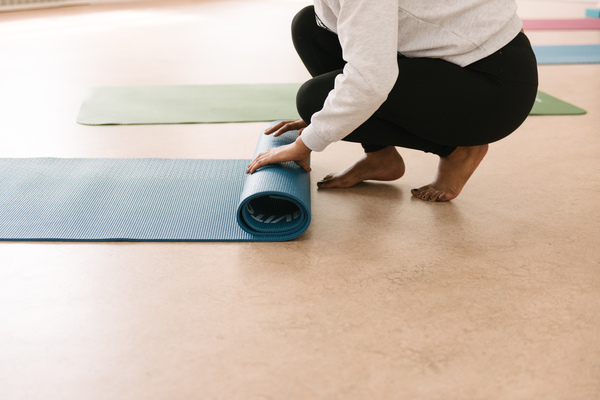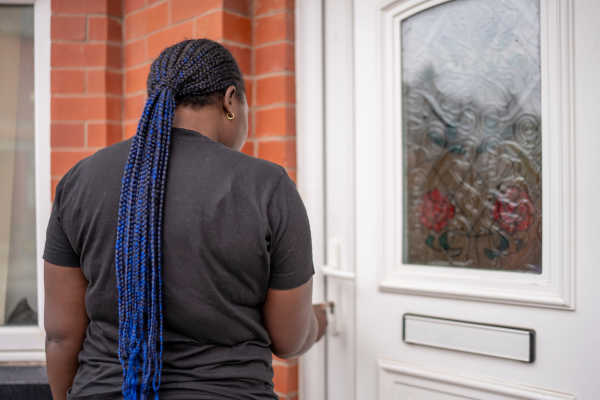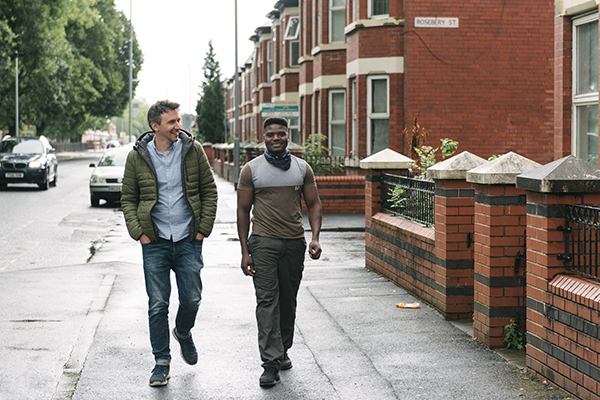Several weeks before the severity of the Covid pandemic became apparent, we applied to the This Girl Can Community Fund to fund a series of in-person yoga classes for our female clients. I had recently joined the Boaz Trust and, as a yoga teacher, I was looking forward to introducing the practice to our clients. In the weeks that followed we were awarded the funding, but it became apparent that we wouldn’t be able to offer anything in-person for a long time to come.
As the world moved online, we too started to imagine an online yoga offering for interested clients. It was a challenging experience as we navigated connectivity issues and multiple languages, and I wrestled with how to demonstrate postures remotely. Still, for all the challenges, it was an opportunity for those who wanted to, to inhabit a space each week where they could notice the body and breath, and move in a way that felt good.
As the restrictions allowed for in the summer of 2020, we met together in the park to practice in-person. So much of the way that yoga is marketed in the West today implies that the practice is about the attainment of a particular posture or a particular look. For me, the practice of yoga is simply an opportunity to become curious about the way we breathe and move, noticing what arises for us as we do so. I wanted our practice and time together in the park to be free of expectation, and instead to invite playfulness and laughter. The memories of those sessions are of the joy that we found in the movement of our bodies.
Teaching from a trauma-sensitive perspective, there is the invitation, and encouragement, to practice in a way that feels safe and intuitive for the individual body that each of us inhabits. I am interested in understanding how our lived experiences shape how we feel in, and about, our bodies, and how the practice of yoga can be used therapeutically to support our physical and mental wellbeing.
Many of the clients we work with have experienced trauma and some are living with post-traumatic stress. This often means that individuals experience dysregulation within their nervous system, which can manifest as symptoms such as anxiety, a heightened sense of danger, difficulty concentrating, and difficulty falling and staying asleep. Furthermore, post-traumatic stress can make it very difficult for a person to live in the present as memories from the past (and any ongoing trauma) can resurface.
Trauma-sensitive yoga is a way for our clients to use movement and breath to help calm the body’s nervous system over time. Our clients have shared that the practice of yoga has supported them to feel calmer, to sleep better and to feel stronger.
“Before I was thinking that I could never do yoga. But then my friend said that we can do anything if we believe in ourselves. When I started yoga I liked it so much. It relaxes my body and I sleep so deeply the night I do it! When I am tired or sad I do yoga and I feel better for it.”
Since June this year, a small group of us have been able to practice together in-person again. There is a different quality to being inside a shared space, greeting and meeting one another where we are in that moment. Our sessions together now feel more dynamic as I respond to what the women tell me they need and want: opportunities to breathe and balance, to be elevated off the ground, and also to be grounded.
Towards the end of each session, as our bodies tire, we come back to the ground and rest. It is there that stillness seems to be found. Sometimes a person tells me that they will go home and sleep now, relaxed by the practice of yoga. That, I come to realise, is enough.









